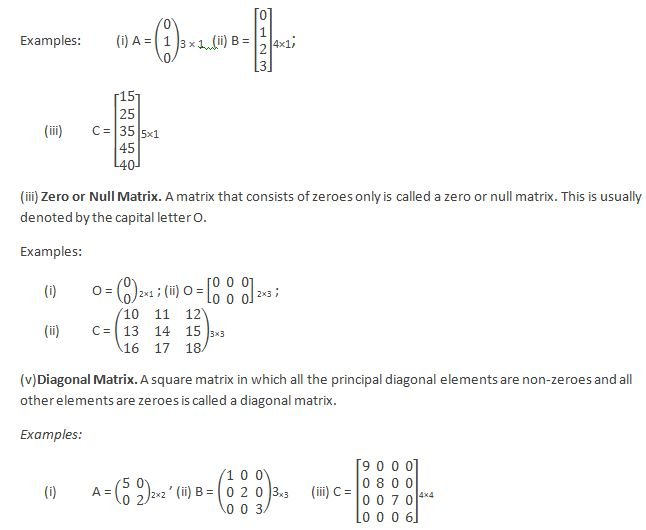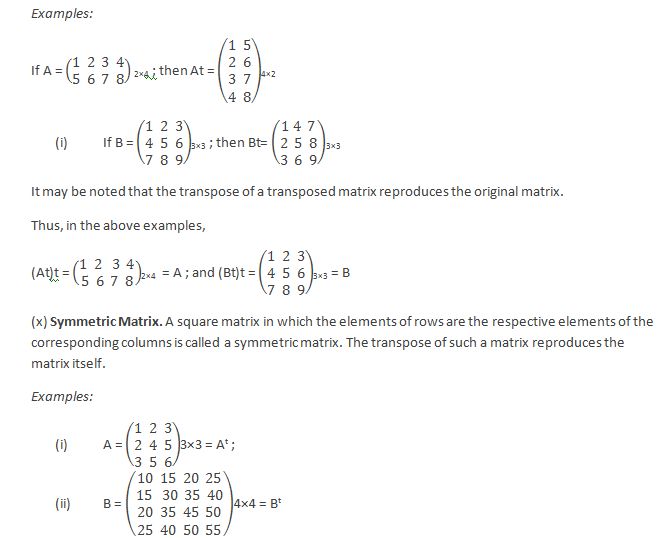Different Types of Matrix
(i) Row Matrix. A matrix that appears with one row only is called a row matrix.
Examples: (i) a = (0 1 2)1 × 3; B = [12 22 10 15]1×4
(ii) Column Matrix. A matrix that appears with one column only is called a column matrix.
Note. (i) Principal diagonal element. An element, both the subscripts (i and j) of which are equal is called a principal diagonal element.
Examples: e11,e22,e33,e44 and the like.
(ii)Principal diagonal element. An element, both the subscripts (I and j) of which are equal is called a principal diagonal element.
(vi) Scalar matrix.
A diagonal matrix in which all the leading diagonal elements are equal is called a Scalar Matrix. In other words, a square matrix in which all the elements except those in the main diagonal are zeroes and all the leading diagonal elements are equal is called a scalar matrix.
An upper triangular matrix A lower triangular matrix
(ix) Transposed Matrix.
A Matrix which is obtained by changing the rows into respective columns, or the columns into their respective rows is called a transposed matrix. To obtain such a matrix, the first row (R1) of a given matrix made the first column (C1), the second row (R2) is made the second column (C2), and so on, or the first column (C1) is made the first row (R1), the second row (R2) and so on. This matrix is indicated by a suffixing t to its denominating letter viz :
At, Bt, Ct etc.
(xi) Skew symmetric matrix.
A square matrix in which all the leading diagonal elements are zeroes and the elements in the upper triangular are respectively equal to the elements in the lower triangular with opposite signs, is called a skew symmetric or alternative matrix. The transpose of such a matrix reproduces the matrix itself but with opposite signs i.e. At = -A.
Examples:
(xii) Orthogonal Matrix.
A square matrix, which when multiplied by its transpose amounts to an identity matrix is called an orthogonal matrix.
(xiii) Singular Matrix.
A square matrix, the determinant of which is 0, is called a singular matrix. (The determinant of a matrix is being explained under para 5 below).
(xiv) Non – singular Matrix.
A square matrix the determinant of which is not zero is called a non-singular matrix.
(xv) Equal Matrix.
A matrix is said to be equal to another matrix, if all its elements are equal to the corresponding elements of the said another matrix.
Examples:
(xviii) Invertible Matrix.
A square matrix, A is said to be an invertible matrix, if there exists a matrix B, with the property A×B = B × A = 1, the identity matrix, In such a case, the matrix B is unique, and it is called the inverse of A and is denoted by A-1.





